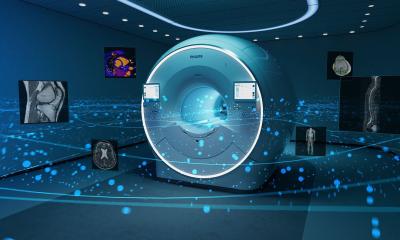Article • Technology impact in emergency medicine
Emergency radiology reports – AI to the rescue?
As Emergency Departments (EDs) get ever busier, focus has fallen on the role artificial Intelligence (AI) can play in supporting patients and clinicians in delivering urgent care. The topic took centre stage in a session looking at the ethics of AI in the ED at the annual congress of the European Society of Emergency Medicine (EUSEM) in Copenhagen.
By Mark Nicholls

While acknowledging that it has a role to play and is already used in hospitals, four expert speakers focused on the case for and against AI in the ED, exploring whether it was ‘threat or promise’. In her presentation, Dr Karoline Skogen looked at how AI can improve efficiencies and workflows in some aspects of ED work. She presented an overview of AI vendors and highlighted where this has had an impact in an ED setting.
Working as a neuroradiologist at Oslo Univeristy Hospitals in Norway, as well as conducting research into traumatic brain injury (TBI), she said that while AI is ‘good at what it is trained to do’ most of the time, weaknesses remain. She warned: ‘If it hasn’t been trained to see a pathology, it can completely overlook it. It is really important to know what you want the AI model to do and know its limitations.’
Skogen believes AI tools may have a role to improve efficiency in the ED with prompt reports of negative scans and x-rays leading to reduced waiting times and a swifter workflow.
Applications for brain bleeds and fractures
Good collaboration between the radiology department and the ED, together with potential commercial AI vendors, is important. ‘If the hospital has a good technical department, it might be worth trying to make AI algorithms that are trained on local data where the hospital has total control over the code and its area of use,’ explained Skogen.
As clinicians, it is important that we take an interest and join the AI adventure and try to guide it so it can assist us best
Karoline Skogen
Within her hospital ED, AI has shown value in areas such as brain bleeds and fractures. ‘We have managed to do this at my local hospital, where we have clinically implemented an in-house developed AI algorithm for the detection to brain bleeds. 'This does require an interest to implement from both the clinical and technical staff, but we have found this experience to be very rewarding and it has really bridged the gap between the developers and medical professionals.’
Joining the “AI adventure”
However, with AI already playing a role in the ED in many hospitals across Europe, she emphasized the importance of clinicians ‘joining the AI adventure.’ ‘AI has arrived and is going to infiltrate more and more,’ she continued, ‘but as clinicians, it is important that we take an interest and join the AI adventure and try to guide it so it can assist us best. I think the more we as clinicians get involved the better the usage will be.’
Also in the session, Dr Noa Galtung from Charite in Berlin discussed the case for using AI in infection diagnostics; Dr Rick Body from the University of Manchester focused on the threat of the Black Box; while Dr Tanja Krones from the University Hospital of Zurich posed the question of whether AI can solve ethical dilemmas in an emergency, such as in the ‘do not resuscitate scenario’.
Profile:
Dr Karoline Skogen is a neuroradiologist at Oslo Univeristy Hospitals in Norway with a PhD in brain tumors and is currently doing a post doc (50%) in developing and clinically implementing both an in-house developed AI algorithm and as well as commercially-available AI softwares. She is currently working 50% clincally as a neuroradiologist and 50% research with an interest in both TBI (traumatic brain injury) and brain tumors.
17.05.2025










